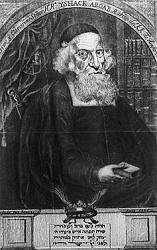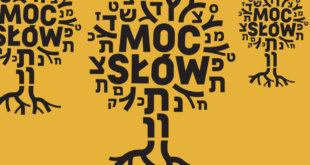
Rabbi Issac Aboab da Fonseca A»H
Recife – The First Jewish Community In The New WorldMany people know that on September 7, 1654, twenty-three Jews arrived in New Amsterdam (renamed New York after the Dutch left). Most are not, however, aware of the fact that these Jews came to America from Recife, Brazil.
Recife, now the capital of the state of Pernambuco, is located on the northeastern shore of Brazil. It has a fascinating Jewish history of its own.Brazil was originally under Portuguese rule, and Jews first arrived there some time after the year 1500. They were active in making Recife a prosperous center for the production of sugar in the sixteenth and seventeenth centuries. Many if not all of the Jews who came to Recife before 1630 were «New Christians,» that is, Jews forced to convert to Christianity during the Inquisition. These Jews were also known as Marranos.
They most likely came to the New World for two reasons. First, there were attractive economic opportunities in Brazil that were not available in Europe. Second, and at least as important to these Jews who secretly clung to the faith of their ancestors, is the fact that until 1580 the Inquisition was not as prevalent in Brazil as it was in countries that Spain controlled.With the unification of Portugal and Spain in 1580, the Inquisition spread with full force to Portugal and to the areas controlled by it in the New World.
Though the Inquisition was never established in Brazil, it had its «familiars» in that country, who spied upon secret Jews, and, in case of detection, seized them and sent them to Lisbon to be tried by the tribunal there. On the other hand, a favorite method of punishment by the Inquisition of Lisbon was to transport convicted relapsed Jews to the colony of Brazil, it is said, twice every year.
The earliest notice of Jews in the country refers to some who had been thus banished in 1548. In the same year, however, several Portuguese Jews transplanted sugar-cane from Madeira to Brazil, and Jews were connected with the sugar industry of the country for the following two centuries.
During the twenty years following the arrival of the first Jewish settlers they were joined by many volunteer exiles of the same faith, until their prominence in trade became noticeable; and edicts were issued by Don Henrique, regent of Portugal, on June 20, 1567, and March 15, 1568, forbidding Marranos to settle in Brazil. This edict, however, was repealed for the sum of 1,700,000 crusados ($714,000) given by the Marranos of Lisbon and Brazil, and the privileges of residence and free commerce were granted to Neo-Christians by an edict of May 21, 1577.
[1]New Christian Jews, while forced to practice Christianity publicly, did whatever they could to maintain their Judaism secretly. They attended Catholic mass regularly and did their best to appear as «loyal» Christians to their neighbors. However, whenever possible, they clandestinely gathered to daven. In order to avoid the ever watchful eye of the Inquisition, the servants of New Christians often did not work on either Saturday or Sunday.
The simple act of bathing on Fridays or wearing nicer clothes on Shabbos could be construed as «a lapse into Judaism,» possibly setting in motion an inquest certain to end badly for the accused. We should keep in mind that the simplest and safest thing for New Christians to do would have been to forsake Judaism entirely. Yet, despite the risk of barbaric punishments and even a horrible death, many tenaciously clung to as many Jewish practices as they could.
In 1630 the Dutch occupied Pernambuco. Holland had a tradition of granting Jews a good deal of religious freedom, and this same freedom was now extended to Recife and its environs. So promising was the position of the Jews in Brazil that Ephraim Sueiro A»H , brother-in-law of Manasseh ben Israel A»H, emigrated to that country in 1638, and was to have been followed by Manasseh himself, who dedicated the second part of his «Conciliador» to the community at Recife (1640). Two years later no less than 600 Jews from Amsterdam embarked for Recife. Included in this number were Rabbi Isaac Aboab da Fonseca A»H, a well-known Amsterdam rabbi, and scholar Moses Raphael d`Aguilar A»H.
They came to Brazil as spiritual leaders to assist the congregations of Kahal Kodesh Tzur Yisroel in Recife and Magen Abraham in Mauricia. By 1645, the Dutch Jewish population of Recife was about 1,500, approximately half of its European population.Synagogue records show a well-organized Jewish community with a high level of participation by Jews as well as New Christians, who were finally able to openly return to the practice of Judaism.
There was an elementary level Talmud Torah and an upper level yeshiva in which Gemara was taught. These records also indicate the existence of a tzedaka fund and an overseeing executive committee. The community was, not surprisingly, in general observant. Each adult male was required to stand guard on a regular basis.
There are documents that show that Jews were exempt from doing guard duty on Shabbos.
They were, however, required to hire gentiles who served in their stead.The life story of the Rabbi Aboab is most interesting.Rabbi Aboab da Fonseca A»H was born in Portugal in 1605 into a family of New Christians. After settling in Amsterdam he returned to Judaism and eventually became a rabbi and a friend of Menashe Ben Israel A»H. (When Rabbi) Aboab joined the Amsterdam Jews in Recife as their hakham, (he became) the first American rabbi.He continued for 13 years as the spiritual mainstay of the community. After the repulse of the Portuguese attack on the city in 1646, (Rabbi) Aboab composed a thanksgiving narrative hymn … the first known Hebrew composition in the New World that has been preserved.While in Recife, Rabbi Aboab also wrote his Hebrew grammar, Melekhet ha-Dikduk, still unpublished, and a treatise on the Thirteen Articles of Faith, now untraceable. After the Portuguese victory in 1654, (Rabbi) Aboab and other Jews returned to Amsterdam, where he became a prominent leader of the local Jewish community.
[2]Held in high esteem by his former Amsterdam congregants, (Rabbi) Aboab was reappointed as hocham in the synagogue and made teacher in the city`s talmud torah, principal of its yeshiva and member of the city`s bet din, or rabbinic court. He died in 1693 at the age of 88, having served the Jewish community of Amsterdam for 50 years after his return from Recife.
[3]The bereavement of their spiritual guide was so keenly felt by Amsterdam Jewry that for many years the name of Rabbi Aboab and the date of his death were incorporated in the engraved border of all marriage contracts issued by the community.
[4]*During the twenty-four years that Recife was under Dutch rule the Jews developed a vibrant community. Recife became the first place in the New World where Judaism was practiced openly. Its members were doctors, lawyers, peddlers, and merchants.
Many Jews prospered in the tobacco, precious gems, wood, and sugar trades. It even had a street called the Rua dos Judeos (Street of the Jews) on which the synagogue Tzur Yisroel was located. Indeed, in 1999 archeological investigation located the exact site of the synagogue when its bor and mikvah were found. The site has been restored and is now a featured tourist attraction of the Recife community.Everything changed in 1654 when Portugal reconquered Brazil. Fearing the reenactment of the Inquisition, the Jews of Recife either returned to Holland or fled to Dutch, French, or English colonies in the Caribbean.
Jews mainly of Sephardic descent (collectively known as «La Nacion») had recently established small but flourishing economic enclaves in Parimaribo, Barbados, Curacao, Jamaica, Hispaniola and Cayenne.
A total of sixteen ships transported both Jewish and Dutch colonists from Recife. Fifteen arrived safely; however, the sixteenth was captured by Spanish pirates only to be overtaken by the St. Charles, a French privateer. After much negotiating, the master of the St. Charles agreed to bring a group of twenty-three Jewish men, women and children from the captured ship to New Amsterdam for 900 guilders in advance and 1,600 on arrival.
[5]These twenty-three refugees arrived in New Amsterdam in 1654. They, together with at least two other Jews who had arrived not long before, were the founders of the Jewish Community of New York.*After finishing this article I discovered that Rabbi Isaac Aboab da Fonseca A»H was apparently a follower of Shabbtai Tzvi. (See www.jewishencyclopedia.com/view. jsp?artid=344&letter=A#810, The Sabbatean Prophets by Matt Goldish page 33, and Sabbatai Sevi by Gershom Scholem, pages 520-522.) To put it mildly, I was shocked, given the greatness of Rabbi Aboab. However, it made me realize how strong the messianic movement in the 17th century must have been to gain adherents of Rabbi Aboab`s caliber.
Fuente: Sephardic Brazil
 eSefarad Noticias del Mundo Sefaradi
eSefarad Noticias del Mundo Sefaradi

